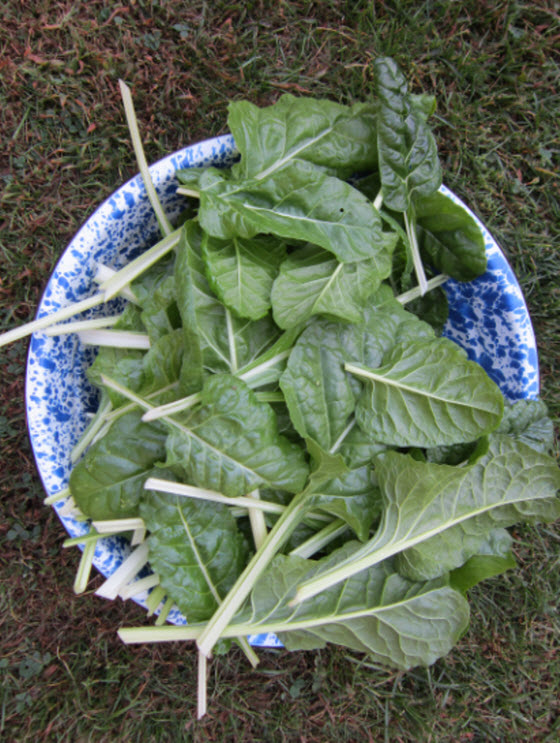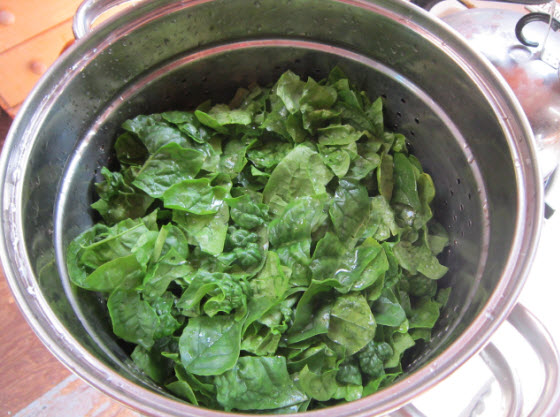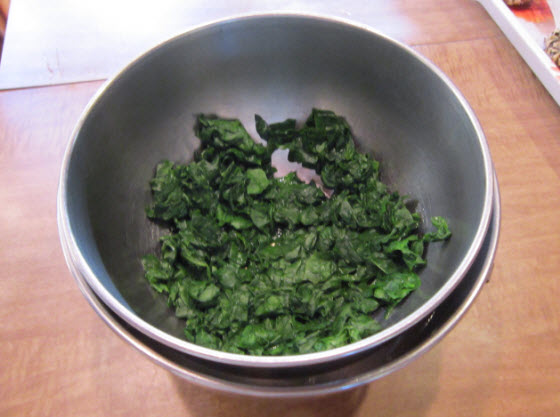Have more greens than you can eat? Freezing spinach and hardy cooking greens is so easy—and you can enjoy them all year long in soups, quiches, smoothies, and more! Here’s how to freeze leafy greens—spinach, Swiss chard, kale, and beet greens.
It doesn’t matter where you get your leafy greens—the garden, farmers’ market, farm stand, CSA, grocery store). As long as they are fresh, tender, and not wilted, you can preserve them.
You can freeze any hardy cooking greens; note that lettuce and tender salad greens are too delicate to freeze properly and is not recommended.
If you are harvesting your own spinach and greens, pick them early in the morning before the heat of the day.
1. Wash the Greens
Select the tender leaves. Wash carefully in cold water to remove any dirt or debris. Sometimes, leafy greens can even have a bug hiding out in its leaves, so rinse more than once if insects freak you out.

- For spinach: Tear any larger leaves into small pieces, discarding the stems.
- For kale: Wash young, tender leaves thoroughly and cut off woody stems.
- For Swiss chard: Put into the steamer whole or tear smaller pieces away from the stems, placing the ribs aside.
- For beet greens: Treat like Swiss chard.
2. Blanch Greens
All leafy greens need to be blanched before freezing. Blanching slows or stops the action of enzymes that would lead to spoilage—and helps vegetables keep their bright color, flavor, texture, and nutrition. Plus, blanching wilts the leafy greens, making them easier to package into freezer-safe containers.
You’ll need a large pot that can hold a steamer basket, strainer, or colander.

Fill the pot with water so that 1 to 2 inches of water is underneath the basket or colander. Bring the water to a boil. Place the greens into the basket or colander and cover the boiling water pot with a lid to steam-heat. Cook the greens until wilted—3 minutes for collard greens, 2.5 minutes for kale, and 2 minutes for all other greens.
3. Plunge into Ice Water
The greens now need to be cooled quickly before being placed in freezer bags! Prepare a large bowl of ice water—near-freezing! You need to stop the greens from overcooking, or they will lose their vibrant green color.
In order not to lose their nutrients via leaching, the greens should be kept separated from the cooling water. It’s easiest to do this by placing the greens inside one bowl, which is then inserted into a larger bowl of ice water. Using the tongs, move them around until cooled down (2 or 3 minutes). Add more ice cubes to keep the water ice cold.
The last step is to drain and dry the spinach. A salad spinner is very useful for this purpose; otherwise, drain in a colander and dry the leaves by placing them on a towel. Fill the towel with leaves, then roll it up and gently squeeze to remove excess water.

4. Pack Greens into Freezer Bags
The dried spinach and greens are ready to be placed in freezer bags. Bags are best (versus containers) for greens because they remove air to avoid freezer burn. Remove as much air as possible before sealing bags. (If you have one, a vacuum sealer system works well with kale.)
Avoid over-packing bags. Flatten bags before sealing to create kale portions that thaw quickly.
Label your bags so you know when you put them in the freezer. You can keep spinach and greens for 10 to 12 months. See how long you can freeze foods.
How much you pack in each bag depends on how you think you’ll use it. If you’re unsure, pack about one cup of spinach per bag. You could pack in smaller sandwich baggies, but I would still put everything in a gallon freezer bag with thicker plastic.
Into the freezer, they go!

Your frozen spinach and greens can be nutritious additions to soup stock and labeled “soup.” In later months, these greens can be spread around at the bottom of a quiche, used in numerous recipes, or tossed with butter (and cheese) and made into a yummy side dish. Enjoy!
In later months, these greens can be spread around at the bottom of a quiche, used in smoothies or numerous other recipes, or tossed with butter (and cheese) and made into a yummy side dish.
Or, just saute fresh greens in olive oil with garlic. Before serving, top with crushed red pepper. Or, make pesto! The list goes on… Enjoy!
Learn more ways to quickly preserve vegetables and fruit.
Do you have any tips or tricks for preserving fresh produce? Share them with us in the comments.














